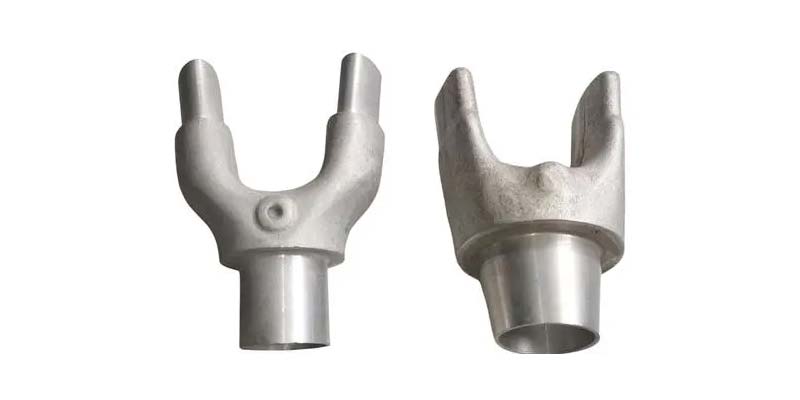- Contact Innally, Let you purchase forgings in China more favorable prices, products more assured!
- Hotline:+(86)15038323776 Email:innally@innally.com
Manufacturing process and steps of bicycle forgings
- Category: Aluminium alloy forging, Bicycle forgings
- |
- Date: 08/10/2023
These steps are interrelated and influence each other, and the failure of any link may affect the quality and performance of the final product. Therefore, the quality and process parameters of each link need to be strictly controlled in the manufacturing process to ensure that each step meets the requirements.
Product Details
Bicycle forgings refer to bicycle parts made by forging process, such as frame, front fork, crank, etc. These forgings have the characteristics of high strength, light weight and beauty, and are of great significance for improving the performance and appearance of bicycles.
Manufacturing process
Selection of raw materials To manufacture bicycle forgings, you first need to choose the right raw materials. Commonly used raw materials include various specifications of steel, aluminum alloy and other metal materials. When selecting raw materials, it is necessary to take into account the mechanical properties, processing properties, costs and other factors of the material, and determine the material selection and processing allowance according to the product requirements.
Treatment before processing
Before processing, it is necessary to carry out a series of treatments on raw materials, including cutting, grinding, heat treatment, etc. Among them, cutting and grinding are to remove burrs and oxide skin on the surface of the material to ensure processing quality; Heat treatment is to improve the mechanical properties of the material, improve the quality and life of the forging.

Processing process
The processing process is the core link of bicycle forgings manufacturing, including a number of specific steps.
(1) Free forging: through the impact or blow method, the plastic deformation of the raw material is made into a preliminary shape of the forging. Free forging can produce forgings of a certain shape and size, but with lower accuracy.
(2) Tire film forging: On the basis of free forging, the tire film is used for further stamping processing of the forging to obtain more accurate shape and size. Tire film forging can improve the accuracy and quality of forgings, but the production efficiency is relatively low.
post-processing
Post-processing is an important link to ensure the quality of bicycle forgings, including inspection, pickling, rust prevention and other steps.
(1) Inspection: The forging size, shape, surface quality and other aspects of the inspection to ensure that it meets the design requirements. Inspection can find and deal with existing defects and problems in time to improve product quality.
(2) pickling: The surface of the forging is cleaned with acid to remove impurities such as oxide and rust on the surface to improve its surface quality and corrosion resistance.
(3) Rust prevention: In order to prevent the forging from rusting during storage and use, rust prevention treatment is required. The commonly used anti-rust methods include coating anti-rust paint, zinc plating and so on.
The manufacturing process of bicycle forgings includes multiple links and steps, such as selection of raw materials, pre-processing, processing and post-processing. These steps are interrelated and influence each other, and the failure of any link may affect the quality and performance of the final product. Therefore, the quality and process parameters of each link need to be strictly controlled in the manufacturing process to ensure that each step meets the requirements. In addition, the manufacturing process also needs to pay attention to safety production and environmental protection and other requirements to achieve sustainable development. In short, the manufacturing process of bicycle forgings is a multi-step, multi-link complex process, which requires comprehensive consideration of various factors to achieve high-quality and efficient production.
nannan
INNALLY mainly provides you with various types of cast and forged parts products. Welcome your inquiries! innally@innally.com
Related Products
Search
Forging center
- Steel forgings
- Aluminium alloy forging
- Titanium alloy forging
- Stainless steel forging
- Copper forging
- Automotive forgings
- Locomotive forging
- Bicycle forgings
- Motorcycle forging
- Rigging and fasteners
- Bearing forging
- Electric power fittings
- Marine forging
- Mechanical forgings for metalworking
- Mining machinery forgings
- Marine engineering forgings
- Construction machinery forgings
Popular product

© 2025. All Rights Reserved.






